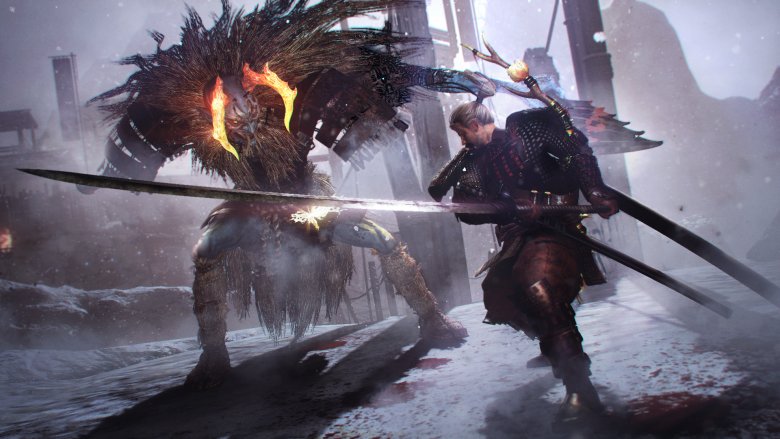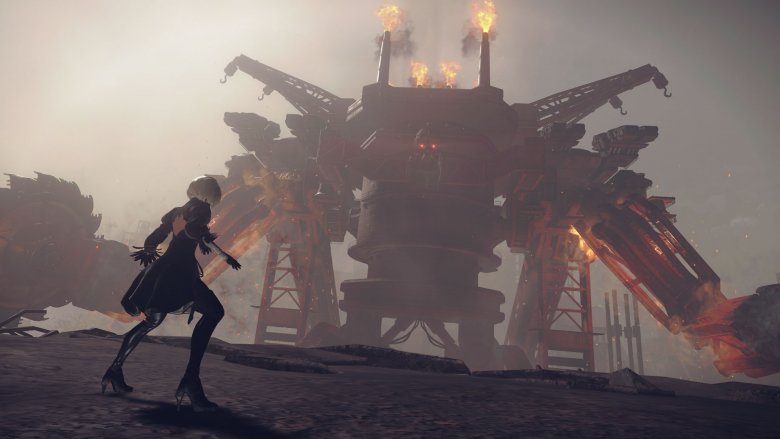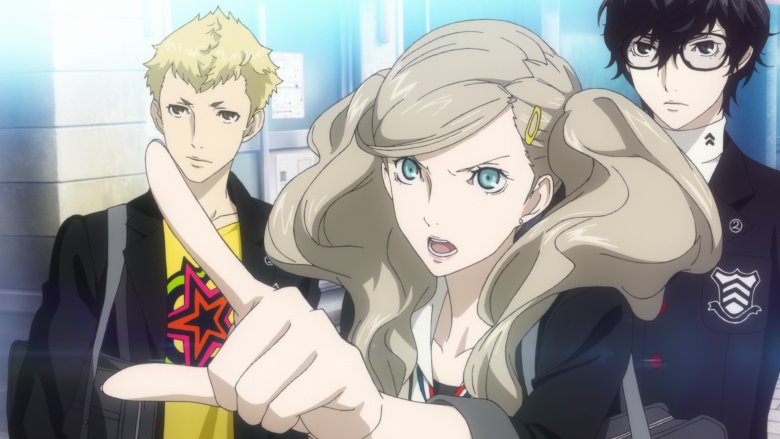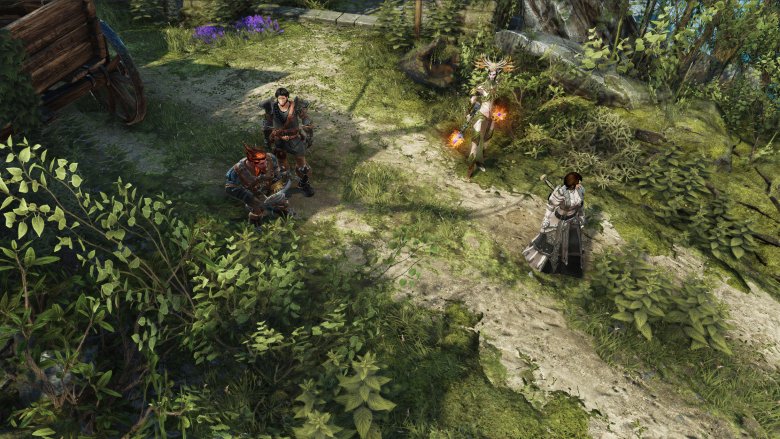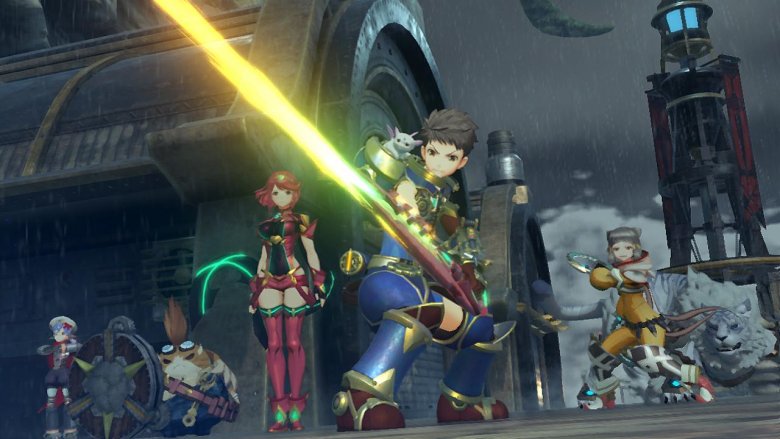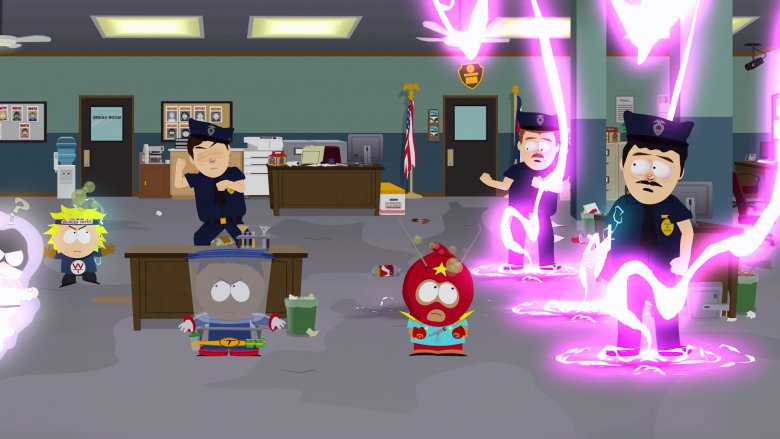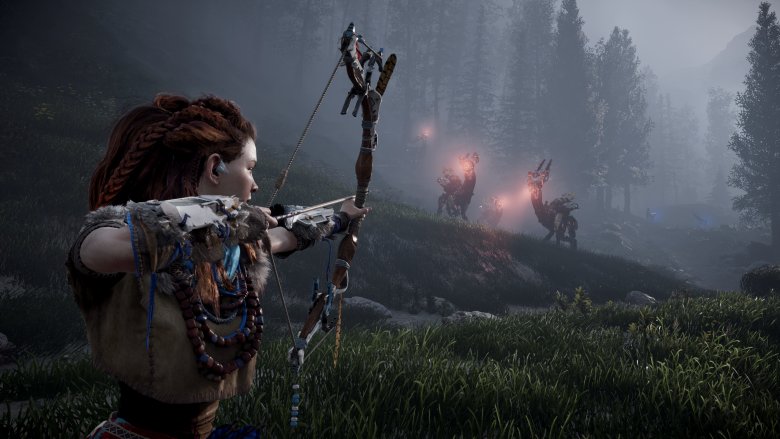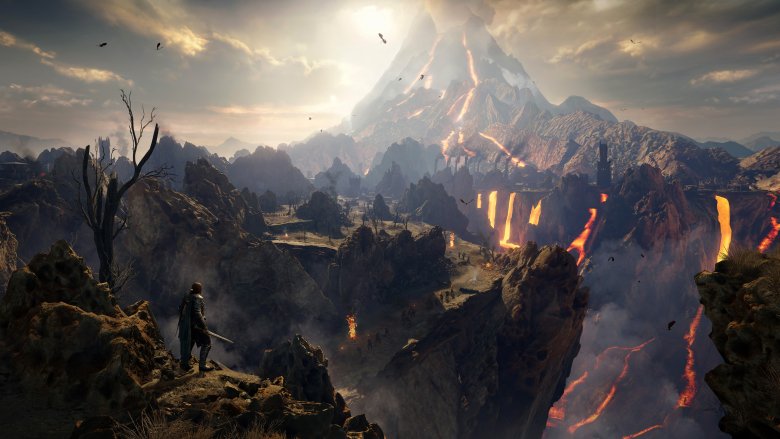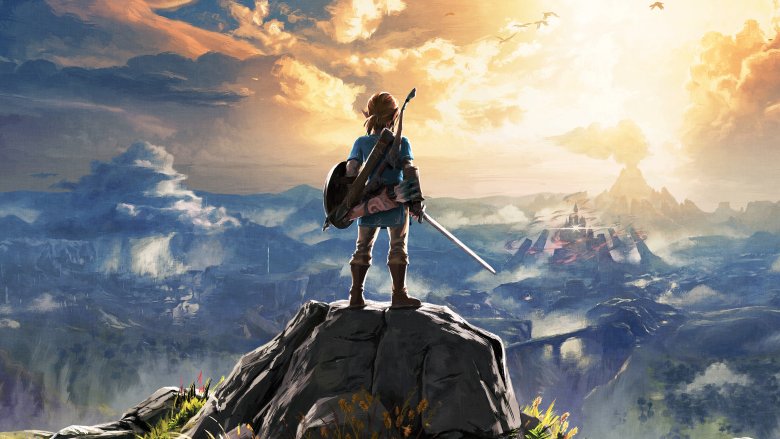The Best RPGs Of 2017
Role-playing games, or RPGs, were introduced to the world with the original Dungeons & Dragons in the 1970s. Since then, the fundamental tenets of completing quests, gaining experience, leveling up, gathering loot, all within a beautiful fantasy setting, have evolved into a thriving constellation of video games. Some of the most-beloved, and longest-played, games in history have come out of the RPG genre.
There's only one small problem: what exactly is the RPG genre, anyway? Many of those core tenets have become gaming staples, regardless of what their mechanics, setting, tone, or story is. Quests and experience can be found in virtually any kind of game nowadays; meanwhile, many games that claim to be RPGs have discarded some of these ideas. The genre has grown out into the entire medium.
So with that in mind, here's a list of RPGs! All of these feature otherworldly settings, rich stories, a variety of loot, and upgrade paths. Some are more traditional to the genre's origins; others are blends of other categories. All of them are great. These are the best RPGs of 2017.
Nioh
Nioh is not for the faint of heart. From its demonic spin on feudal Japan to its unforgiving combat to its controller-throwingly difficult bosses, Nioh never wants you to be comfortable. It will push you; it will frustrate you; it will infuriate you. But take the time to master its systems and learn its intricacies, and it will also reward you with superlative enemy encounters and triumphant victories.
To help, the game provides loot with a limitless number of permutations. There isn't just "good" or "bad" gear: certain items will synergize together, or help customize your character in a specific way. The result allows players to figure out their own style, while also acting as its own kind of puzzle to solve. What's the best way to defeat a certain enemy? Why not try another set of weapons, stats, and armor? No player will ever have the same experience as another, and no playthrough will ever be quite the same, with such a broad variety of items to choose from.
In addition, Nioh blends the supernatural with not just Japanese history, but European history as well. The lead character is a Westerner who's learned the Samurai way; the villain is inspired by a historical figure, wrapped up in the sixteenth-century struggle between England and Spain. Fantasy settings don't normally veer so close to the real world, or blend cultures like this. That alone is worth checking out, provided you can survive for long enough.
Nier: Automata
If you've been playing games that just make too much sense, don't worry, because Nier: Automa has you covered. From a bizarro storyline to over-the-top bosses to hyperkinetic action sequences, Nier is a relentless visual and audio overload. While there is a giant post-apocalyptic world to explore, Nier is really built around its combat encounters. Where Nioh shines in its slow, measured approach, Nier swings as hard as it can in the opposite direction. The button-mashing is strong with this one.
Part of what makes the combat so distinctive is the ability to customize your character with upgrades and weapons at any time. If, in the middle of a major boss battle, you find yourself wishing you'd kitted your character differently, then you can adjust right then and there. This can lead to dizzyingly complex combat scenarios, but also a level of freedom and personalization that other games only dream of.
Nier may not appeal to those looking for a deep story or an involving world, but for those who love action and customization, there's never been anything quite like it.
Persona 5
Persona 5 suffers from split-personality disorder in the best way possible: it's really multiple different games all seamlessly interwoven together. You play as a high school student, taking tests and finding work in Tokyo. But at the same time, you invade the minds of the city's worst citizens, root out the causes of their corruption, and save those lost souls by defeating their inner demons for them. If that sounds crazy to you, fear not! There's plenty more where that came from.
Each citizen's mind is a completely different experience. For one thing, each mind is represented by a different location, such as a museum or a castle. Further, each of those locations has distinct puzzles, mechanics, and enemies, with enough breadth and variety to feel like you've accidentally loaded a different game altogether. Meanwhile, the main character constantly collects new abilities, which can be combined for unique new meta-abilities. Sound like too much? There's more! Back in real-world Tokyo, the high school student has a number of allies to meet and quests to complete. Plus mini-games. And did we mention you can read books?
Despite all this variety, Persona 5 is still a wonderfully integrated experience dripping with charisma and style. The long-running series fires on all cylinders for this installment, and delivers imagination and innovation in equal measure. Just don't forget to take your quiz.
Divinity: Original Sin 2
At first glance, Divinity: Original Sin 2 might look like a throwback to yesteryear: top-down camera, a party full of fantasy-trope races and character classes, and turn-based combat. And all of that is true. What's also true is that Original Sin 2 has elevated this classic style to new heights, delivering a deep, involving epic adventure with twists, humor, and more than a few fireballs.
Original Sin 2 features a bewildering array of dialogue choices across an enormous cast of characters. By itself, that provides a huge amount of narrative depth. But many of those choices carry actual consequences; far from throwaway dialogue, conversations are filled with moments that can dramatically alter the course of your journey. That gives an already lengthy experience the potential for multiple replays.
Plus, your character's race can change the way people perceive you. Undead characters, for example, can spook potential allies from even talking to you. In other words, Original Sin 2 gets mighty close to the ultimate promise of the RPG genre: letting players impact a living, breathing world in a substantive way. While casting fireballs.
Xenoblade Chronicles 2
As the average age of the gaming-playing consumer has gone up, the games themselves have gotten more adult, too. Many of the RPGs on this list are bloody, brutal affairs with a dim view of their world. But this isn't true for all of them, and Xenoblade Chronicles 2 stands out with an endlessly optimistic protagonist and a vibrant art style. The world may be in danger in Xenoblade 2, but there's never any question that positivity will save it in the end.
But don't make the mistake of thinking the game has been dumbed-down to become kid-friendly. The combat is a surprisingly deep system incorporating precision timing, tactical positioning, and a series of weapons that each unlock different abilities for the player. In addition, these weapons can be swapped out at will, even mid-battle, allowing for players to match their play style not only to the enemy, but even to the specific moment.
Throw in a beautifully realized world of living, moving continents and a never-ending list of side quests, and Xenoblade Chronicles 2 delivers an experience that's both rewarding and uplifting. The story is pretty zany, and there are more than a few technical hiccups. But in the end, Xenoblade 2 is more than the sum of its sometimes-flawed parts.
Pyre
The RPG genre contains many of gaming's biggest open worlds, with hundreds, sometimes thousands of hours of content. But oftentimes, quality doesn't mean massive scope; instead, quality can come in a short, masterfully crafted package that may only last a few dozen hours, but will stay in your head long after.
Pyre counts itself in the latter category. While there might be only 20 hours or so of playtime, those 20 hours feature gorgeous art, fluid animations, multilayered characters, a compelling narrative, and that all-important RPG staple: magic basketball.
Exiled from your homeland as a criminal, your character assembles a team to compete in the Trials: a half-sports, half-magic competition in which the winner is allowed to go back home. The core of your adventure comes from assembling your team, learning their backstories, and guiding them to victory.
Meanwhile, the Trials themselves comprise the backbone of the gameplay. Even though teams of three compete, and the action is in real-time, only one team member can move and act at any one time. It is incumbent on the player to position team members into safe spaces for when they're deactivated. Under the shiny magic spells, the game is somewhat akin to hoops. But with art that looks this good, it feels like a brand-new sport.
Pyre may not be the game you play forever, but it will be the one you think about for a long time after you're finished.
South Park: The Fractured But Whole
Video games that tie-in to pre-existing franchises don't exactly have a great track record. But as in so much else, South Park broke the mold with 2014's RPG The Stick of Truth. The 2017 sequel is called The Fractured But Whole–you'll get it if you say it fast–and it once again allows players to explore the town of South Park with superpowers, a growing roster of allies, and tactical turn-based combat. And farts. A lot of farts.
There are two ways to look at Fractured: as a South Park experience, and as an RPG. In both ways, the game excels. Franchise masterminds Trey Parker and Matt Stone wrote the script and provided their voices, very much keeping the tone and atmosphere in line with the ballistic absurdity of the TV show. Meanwhile, the gameplay features a clever system of hybridizing superhero archetypes while equipping various items, allowing for a flexible and powerful upgrade system on par with RPG greats. Fractured proves that franchise tie-ins don't have to suck, exactly like its predecessor did.
The story itself is a satire not only of superheroes, but of the corporate juggernauts behind superhero media and the sometimes-ludicrous fan cultures that arise around them. True to South Park's nature, it's often unclear how "real" any of this is. Also true to South Park's nature, it doesn't much matter. The comedy is on-point and rapid-fire, and whether you love or hate the superhero genre, South Park makes it accessible, fun, and fresh.
With farts. Lots of farts.
Horizon: Zero Dawn
Horizon: Zero Dawn blends an interesting mix of settings: its characters look almost like caveman in their clothes and weaponry, yet the technology is so advanced as to be magical. Meanwhile, enemy creatures are animalistic and savage, and yet are mechanical constructs. The dawn of civilization crossed with advanced technology: that alone makes Horizon a world worth exploring. The fact that the visuals are gorgeous, with vibrant colors and fluid animations, only makes the journey that much better.
Though Horizon puts a greater emphasis on exploration than combat, when the fighting does start, the encounters are memorable and challenging. There isn't much in the way of "easy" enemies: the techno-animals range anywhere from big cat-sized to towering behemoths, and the player must use agility, stealth, and some very well placed attacks to bring them down. Crafting can be done on-the-fly, allowing for some last-second alterations in strategy. Even then, be prepared to mash that dodge button. A lot.
Underpinning this all is a mystery that the player is on a quest to solve, which examines this untamed world in detail and strikes at the heart of how it came to be. How do people react to technology when it's indistinguishable from magic? What happened to the civilization that built these machines, and why did they build them at all? Horizon's narrative weaves all of these together into the hero's journey, and delivers on them with a conclusion that will linger for a while after you've put the controller down.
Middle-Earth: Shadow of War
Middle-Earth: Shadow of Mordor was a surprise breakout back in 2014, with its counter-based combat, varied open world, and its groundbreaking Nemesis system, which gave even throwaway enemies a personal connection to your particular playthrough. It was, in other words, a really massive game. So what did Monolith Productions do for the sequel, Middle-Earth: Shadow of War? More. They did more. Of everything.
Hero character Talion isn't just a lone Ranger this time around: he gathers an entire army of orcs, complete with its own command hierarchy of Nemesis-individualized characters. With his armies, he assaults enemy-held fortresses in lengthy sieges, which can feature kaleidoscopic fights of nameless orcs, named villain orcs, and named ally orcs all fighting against, with, and alongside Talion. All the while, the other characters will remember your actions and may gain fears, affinities, or revulsions based on it.
The world reacts to you, and develops because of you. More so than most other titles, Shadow of War lets you impact your situation with meaningful consequences. That said, this isn't just any other world: this is Middle-Earth, one of the most beloved and well-known fantasy settings in history. That setting doesn't always fit the game very well, and Tolkien purists will be horrified by the liberties and inaccuracies littered throughout.
But as a game, Shadow of War offers no shortage of things to do, armies to grow, or orcs to kill. The Nemesis system remains one of the great innovations of this generation, and the sequel expands the system in a big way. When you care more about your orc allies than the main story, you know you're playing something special.
The Legend of Zelda: Breath of the Wild
Thirty years on, The Legend of Zelda remains one of the medium's most influential franchises. Breath of the Wild continues Zelda's winning streak, with the largest and most diverse world the series has yet seen. Perennial hero Link has more to see, more to do, and more to fight than ever before. Puzzles abound, whether explicit or implied. All of this is laced with Zelda's trademark charm and approachability.
Exploration has always been fundamental to Zelda, but in Breath of the Wild this has been taken to a whole new level. Link has more ways than ever to get around, key among them being his ability to climb nearly any surface, and his paraglider that lets him, well, paraglide anywhere he wants. While it's always fun to hunt for new adventures, Breath of the Wild gives players the ability to simply wander for wandering's sake. And in a world this rich with stylized beauty, no one who wanders is lost.
In a way, Breath of the Wild is mimicking in its design the very system it is meant to help sell: the Nintendo Switch, which gives gamers the ability to wander and play at the same time. As usual, this Zelda has already become the defining title of its platform. But then again, there's nothing "as usual" about such a feat. That's what makes Zelda as a whole, and Breath of the Wild in particular, so wonderful.

